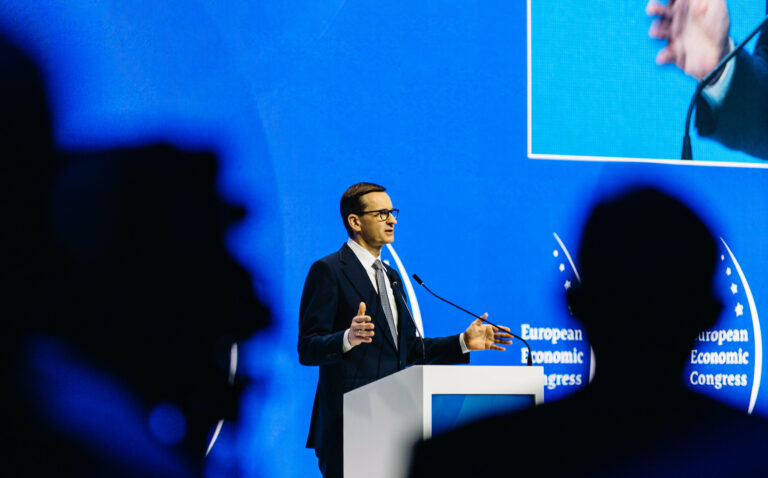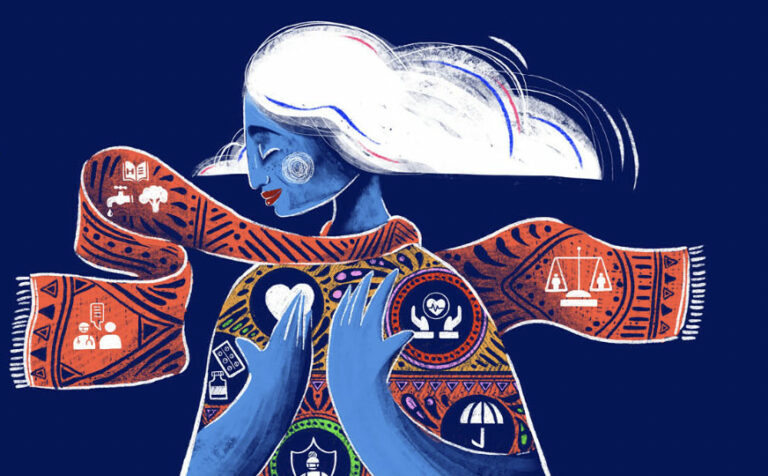
Blog: Women in power — an analysis of women’s representation in the top political and administrative positions in the EU
On 22 October 2022, Giorgia Meloni was sworn in as Italy’s prime minister. The event has had wide coverage not only because of the character of the political party and political shift she represents but also because she is the first woman to become prime minister in Italy. As a new leader and representative of the country, Giorgia Meloni will join the European Council, becoming the fourth woman among the current 27 representatives of EU member states present there.
The EU is often referred to as a promoter of human rights and gender equality. Therefore, in this article, we will analyse the representation of women in the higher political and administrative positions in the EU’s main institutions, trying to identify the tendencies and establish the areas of concern.
The union brings together 27 independent states. To manage the effective cooperation and collaboration between so many states, each with its interests and priorities, a unique institutional mechanism was established. Among others, it includes 7 main institutions and a number of supporting bodies and agencies. The main institutions are the following:
· the European Parliament
· the European Council
· the Council of the European Union
· the European Commission
· the Court of Justice of the European Union
· the European Central Bank
· the European Court of Auditors

The European Parliament is one of the legislative bodies of the EU and is the only EU institution directly elected by the citizens. The predecessor of the European Parliament, the Common Assembly of the European Coal and Steel Community, was created in 1952. Its current name institution got 10 years later, in 1962. It is headed by a President, elected by the members of the parliament for a two-and-a-half-year term. Since the creation of the institution, the Parliament has had 30 Presidents, only 3 of which – 10% – were women: Simone Veil (1979-1982; France), Nicole Fontaine (1999-2002; France), and the current President, Roberta Metsola (since 2022; Malta).
The European Council is the EU’s institution in charge of defining the general political direction and priorities of the EU. It is the forum for the EU’s heads of state and government to meet and discuss the current state of affairs. In its current form, the European Council was created in 1974 at the Paris summit with the first meeting coming a year after – in 1975. Before the Lisbon Treaty came into force in 2009, the Council/European Council was automatically led by the head of the state or government of the member state currently holding the rotating presidency of the Council of the European Union. Since Lisbon, the President of the European Council is appointed by the European Council for a two-and-a-half-year term. From 1958 until 2009, the presidency changed 104 times (rotating presidency), which resulted in 89 people having the position of the President-in-Office (some of the people occupying the position held the office a few times). Only 2 of them were women: Margaret Thatcher (July-December 1981 and July-December 1986; the United Kingdom) and Angela Merkel (January-June 2007 and July-December 2020; Germany). Since 2009, when the Treaty of Lisbon came into force and the position of the full-time President of the European Council was established, the office has been run by 3 people – all men. In total, only 2% of the Presidents-in-Office were females, and no woman has been appointed as a President of the European Council up to date.
The Council of the European Union or Council of Ministers is the other decision-making body of the EU, which consists of the representatives from each member state at a ministerial level and is responsible for the revision and approval of the proposals of the European Commission, together with the European Parliament. The Council of the European Union is led by the rotating presidency, which is not a single post but is held by a member state’s government. Since 1952, the presidency has therefore changed 130 times, which resulted in 114 people leading the office (some of the people occupying the position held the office a few times). Out of them, 7 were women: Margaret Thatcher (July-December 1981 and July-December 1986; the United Kingdom), Angela Merkel (January-June 2007 and July-December 2020; Germany), Helle Thorning-Schmidt (January-June 2012; Denmark), Laimdota Straujuma (January-June 2015; Latvia), Viorica Dăncilă (January-June 2019; Romania), Sanna Marin (December 2019; Finland), and Élisabeth Borne (May-June 2022; France). Accordingly, only 6% of the heads of the presidency of the Council of the European Union were women.
The European Commission is the executive body of the EU. The predecessors of the European Commission were the High Authority in the European Coal and Steel Community established in 1951 and the executive bodies (‘commissions’) of the European Economic Community and the European Atomic Energy Community established in 1958. These three institutions were merged into one called the Commission of the European Communities in 1967, and only in 2009, according to the Lisbon Treaty, did the body get its current name – the European Commission. In the period from 1951 until 2022, many changes have happened to the number and the way the members of the institution were selected, its powers, and its responsibilities. Following the regulations in force, the European Commission is composed of 27 members headed by a President. Each EU member state has one representative in the Commission, however, the members of the European Commission act not in the interests of their countries, but in the general interest of the European Union. The President of the European Commission is proposed by the European Council and elected by the European Parliament. There have been 13 Presidents of the European Commission since its creation, only one of them a woman – the current President, Ursula von der Leyen (since December 2019; Germany). By this count, only 8% of the Presidents of the European Commission were women.
The Court of Justice of the European Union is the judicial body of the EU and is responsible for the interpretation of EU law to make sure it is applied in the same way in all EU countries and for the settlement of legal disputes between national governments and EU institutions. Currently, the Court of Justice of the European Union consists of two separate courts: the Court of Justice and the General Court. The Court of Justice is composed of 27 Judges and 11 Advocates General appointed by common accord of the governments of the Member States. The institution is led by the President who is elected and by the judges for a renewable term of three years. Since 1952, the Court of Justice has had 11 Presidents, all men. The General Court is made up of two judges from each Member State. It hears actions taken against the institutions of the European Union by individuals and member states. The judges are appointed by the common accord of the governments of the Member States. In turn, they appoint the President from amongst themselves for a period of three years. There have been 5 Presidents of the General Court, all men.

The European Central Bank is the central bank of the 19 European Union countries that have adopted the euro. Its main task is to make the monetary and economic policy of the Eurozone and the European Union and to manage the single currency. It was formally established in 1998, however, it is considered to be a successor of the European Monetary Institute which existed from 1994 until 1997. The European Central Bank is led by the President who is appointed by the European Council for an eight-year non-renewable term. The body has had 5 Presidents (including the period of the European Monetary Institute). Out of them, only 1 was a woman – the current President Christine Lagarde (since November 2019; France). Consequently, 20% of the Presidents of the European Central Bank were women.
The European Court of Auditors is the EU’s external auditor created to improve the EU’s financial management. The court was established by the Treaty of Brussels in 1975 and started its operation in 1977. However, the European Court of Auditors became a fully-fledged European institution only in 1993 with the entry into force of the Maastricht Treaty. The institution is composed of 27 members (one from each member state) and is led by the President who is selected by members among themselves for a renewable term of three years. There have been 13 Presidents of the European Court of Auditors up to date, all men.
Following the analysis carried out, we can see that women have been hugely under-represented in the higher political and administrative positions in the EU’s main institutions throughout history. Of particular concern is the judiciary and financial systems: as of now, there has been no woman President of the Court of Justice or General Court of the European Union, no woman President of the European Court of Auditors, and only one woman President of the European Central Bank.
At the same time, recent years have seen a positive tendency of giving women more space and voice: three of the main EU institutions are currently led by women – the European Parliament, the European Commission, and the European Central Bank – the last two for the first time – and the number of women heads of government leading the presidency of the Council of the European Union has also increased significantly since 2015. One of the reasons behind this is the societal changes caused by the gender equality directives and regulations adopted by the EU in the past 20 years.
Taking into account the fact that the composition of the majority of the EU institutions depends on or is directly defined by the EU member states and their governments, a low number of women in the higher political and administrative positions in the main EU institutions proves there is a need to work harder at combating the gender stereotypes that hinder the access of women to the higher positions at member states’ level. For instance, since 1946, six countries out of 27 have not had a woman head of state or government – Bulgaria, Cyprus, the Czech Republic, Luxembourg, the Netherlands, and Spain (Italy was on this list before 2022), while the countries with the largest number of women in the highest positions at the EU level are France and Germany.
Author: Liliia Antoniuk, Young European Ambassadors in Ukraine National Coordinator.
LATEST

How you can help the planet every day

Building Europe: Poland’s experience of joining the European Union and lessons for Ukraine

World Health Day 2024: My Health, My Right

EUREKA MEETS EUROPE – opportunities to develop and study. My experience

Can you wear pink in the workplace?
More campaign pages:
Interested in the latest news and opportunities?
This website is managed by the EU-funded Regional Communication Programme for the Eastern Neighbourhood ('EU NEIGHBOURS east’), which complements and supports the communication of the Delegations of the European Union in the Eastern partner countries, and works under the guidance of the European Commission’s Directorate-General for Neighbourhood Policy and Enlargement Negotiations, and the European External Action Service. EU NEIGHBOURS east is implemented by a GOPA PACE-led consortium. It is part of the larger Neighbourhood Communication Programme (2020-2024) for the EU's Eastern and Southern Neighbourhood, which also includes 'EU NEIGHBOURS south’ project that runs the EU Neighbours portal.

The information on this site is subject to a Disclaimer and Protection of personal data. © European Union,